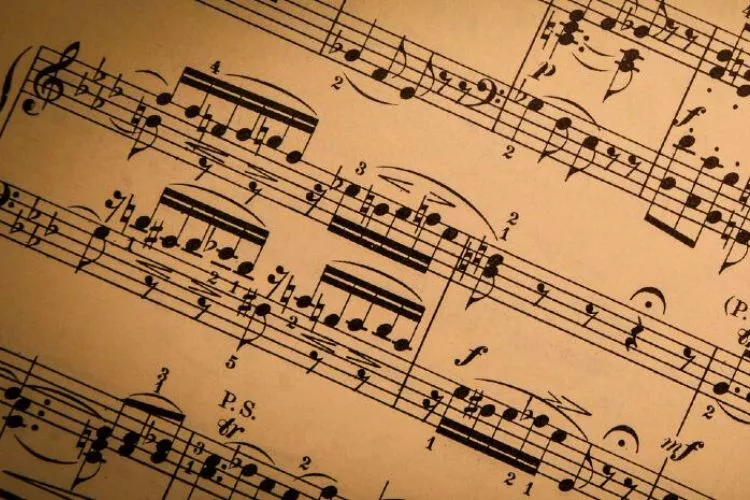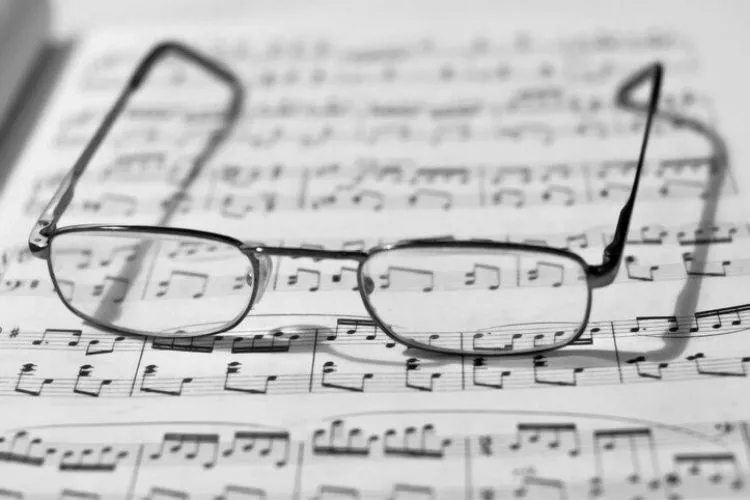Sight reading is a crucial skill for piano players that allows them to play music they haven’t encountered before.
It involves quickly recognizing musical notes, rhythms, and other musical elements while performing. Mastering sight reading can greatly enhance a pianist’s musical fluency, creativity, and versatility. So, go through our guide regarding how to practice sight reading for piano and master it.

Contents
- 1 🎶How can I practice sight reading for piano?
- 2 🎶Warm-up Exercises for Sight Reading
- 3 🎶Developing Note Recognition Skills
- 4 🎶Practicing Sight Reading with Simple Sheet Music
- 5 🎶Sight Reading Strategies for Intermediate Players
- 6 🎶Tools and Resources for Sight Reading Practice
- 7 🎶Overcoming Sight Reading Challenges
- 8 🎶Tracking Progress and Continued Improvement
🎶How can I practice sight reading for piano?
Before diving into sight reading practice, it’s essential to understand what sight reading is and why it is important. Here’s a overview before detailed explanation.
To practice sight reading for piano, follow these steps:
- Choose Material: Select a piece that is slightly below your skill level for the start.
- Analyze: Before playing, analyze the piece. Look at the key signature, tempo, dynamics, rhythm, repeat signs, and the overall structure.
- Hands Separately: Begin by practicing each hand separately to familiarize yourself with each part.
- Slow Down: Begin at a slower tempo and gradually increase the speed as you become more comfortable.
- Predict the Notes: As you play, try to look at the next segment of music to prepare your fingers for the upcoming notes.
- Rhythm Over Notes: Maintain the rhythm even if you miss some notes.
- Regular Practice: Practice sight reading for 10-15 minutes everyday for improvement.
Each step aids in reinforcing familiarity with musical structures and allows continuous improvement.
However, sight reading comes with its own set of challenges. It requires the pianist to decode the musical notation, decode rhythms, navigate through different key signatures, and maintain proper tempo and dynamics all at once.
By familiarizing yourself with the basic elements of sight reading and common challenges, you can approach your practice more effectively.
🎶Warm-up Exercises for Sight Reading
Just like any physical activity, warming up is crucial before diving into sight reading practice. Start your practice session with finger exercises to improve dexterity and coordination.
Simple exercises like finger stretches, finger taps, and finger independence drills can help loosen up your fingers and prepare them for the demands of sight reading.
Next, incorporate scales and arpeggios into your warm-up routine. Scales help you become familiar with different key signatures, while arpeggios improve your finger control and agility.
Practice these exercises in different patterns and play them at various tempos to challenge yourself. To further improve your sight reading abilities, incorporate rhythmic exercises into your warm-up routine.
Clapping or tapping out rhythms will help you internalize different note durations, which is crucial for accurately interpreting rhythms while sight reading.
🎶Developing Note Recognition Skills
The ability to quickly recognize and identify notes on the staff is essential for efficient sight reading. Start by learning the names of the notes on the grand staff.
Begin with a particular clef, such as the treble clef, and gradually incorporate the bass clef. Use flashcards or online tools to quiz yourself regularly, aiming to effortlessly identify notes and their positions on the staff.
Additionally, memorize basic music intervals and chords. Being able to identify intervals and chord shapes at a glance can greatly simplify sight reading.
Intervals can be practiced by associating them with popular songs or memorable mnemonics for each interval type. Chord recognition can be improved by practicing common chord progressions and arpeggios in various keys.
🎶Practicing Sight Reading with Simple Sheet Music
When starting your sight reading practice, it’s important to choose sheet music that is appropriate for your skill level. Look for beginner-level pieces with simple melodies and rhythms.
As you progress, gradually challenge yourself with more complex pieces. Online platforms and music books specifically designed for sight reading practice can be valuable resources.

Approach each piece systematically. Before playing, take a moment to scan the music – note key signatures, time signatures, tempo markings, and any signs or symbols.
Mentally prepare yourself for any potential technical challenges or musical nuances. A useful strategy is to silently count the beats before starting, allowing yourself to establish the tempo mentally.
As you start playing, focus on keeping a steady tempo and rhythm. Even if you make mistakes, aim to keep the flow of the music going. Don’t get caught up in correcting small errors but prioritize maintaining the overall musicality.
🎶Sight Reading Strategies for Intermediate Players
Once you have built a strong foundation in sight reading, you can progress to more intermediate-level challenges.
Start by practicing sight reading with both hands simultaneously. This can be daunting at first but gradually becomes more natural with practice. Challenge yourself with pieces that contain complex rhythms and syncopation.
These pieces will further enhance your rhythmic awareness and ability to play intricate passages accurately. Focus on subdividing the beats mentally and counting each note value precisely.
Incorporate dynamics and expressive elements into your sight reading practice. This will help you develop a deeper understanding of musical interpretation and add nuance to your performance.
Experiment with different phrasing techniques and articulations while maintaining a consistent pulse.
🎶Tools and Resources for Sight Reading Practice
Numerous tools and resources are available to assist you in your sight reading practice. Sight reading apps and software are excellent for developing your skills.
These apps provide a variety of exercises with different difficulty levels and enable you to practice any time, anywhere.

Online platforms offer an extensive range of sight reading exercises, including sight reading drills with customizable options, allowing you to focus on specific aspects of sight reading that you find challenging.
Some platforms also provide real-time feedback to help you identify areas for improvement. Recommended sight reading books and publications can prove invaluable.
They provide a structured approach to sight reading practice, offering a progressive series of exercises that gradually increase in difficulty. Look for books specifically tailored to your skill level and musical interests.
🎶Overcoming Sight Reading Challenges
Sight reading can be a mentally demanding activity, and concentration is key. To improve your concentration, practice in a quiet and distraction-free environment.
Minimize interruptions and ensure you are mentally present during your practice sessions. As you progress, gradually increase the duration of your sight reading sessions to build endurance.
Address performance anxiety related to sight reading by reframing your mindset. Remember that sight reading is a skill that improves with practice.
Embrace the challenge and enjoy the process of reading and playing music in real time. Over time, with consistent practice, your confidence will naturally increase.
If you’re struggling to make significant progress with sight reading on your own, seek guidance from an experienced piano teacher or mentor.
They can provide personalized feedback, offer additional exercises and strategies, and help you overcome specific challenges.
🎶Tracking Progress and Continued Improvement
To gauge your progress in sight reading, it’s crucial to set realistic goals. Start by identifying specific areas you want to improve, such as note recognition, rhythm accuracy, or playing with dynamics.

Set achievable targets, and monitor your progress regularly. Celebrate small milestones along the way. Incorporate regular sight reading practice into your routine. Consistency is key to improvement.
Aim to practice sight reading for a specific period each day, or allocate dedicated practice sessions throughout the week. By making it a regular part of your practice routine, you will gradually build your skills and improve your sight reading abilities.
You may also find useful: How Much does it Cost to Restring a Piano?
Conclusion:
In conclusion, sight reading is an essential skill for piano players that enhances musical fluency, creativity, and adaptability. By following the tips, techniques, and exercises outlined in this article, you can develop your sight reading abilities effectively.
Remember, sight reading takes time and consistent practice to master, so be patient, enjoy the process, and celebrate your progress along the way.
With dedication and perseverance, you can unlock new musical possibilities and elevate your piano playing to new heights!
